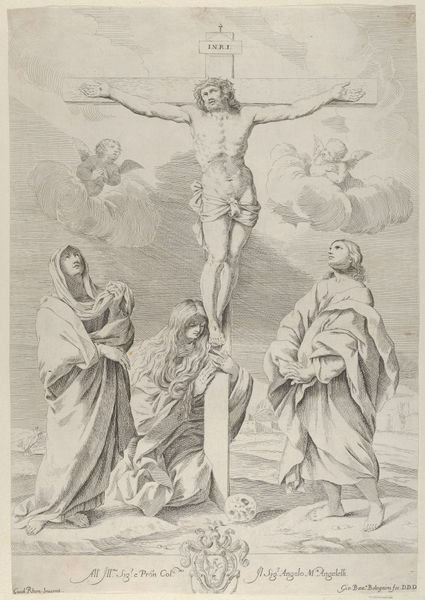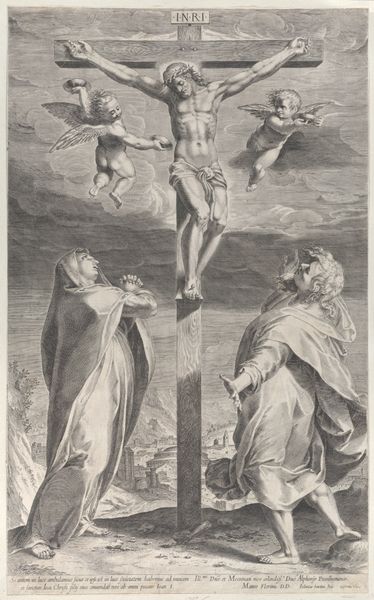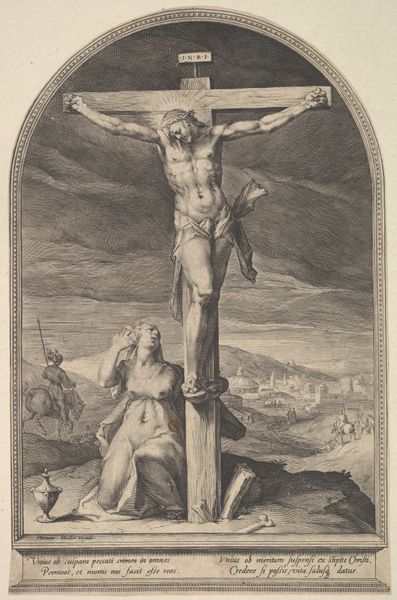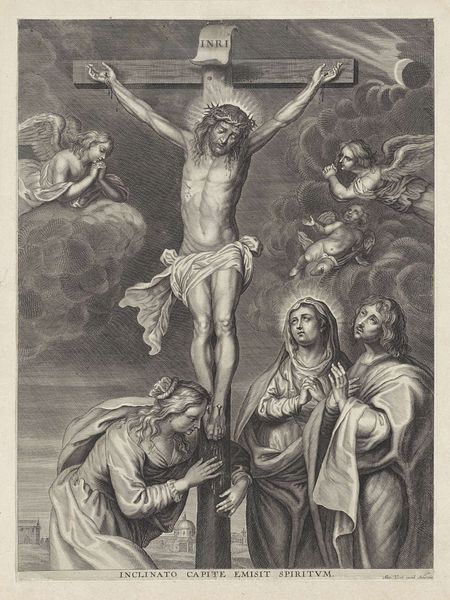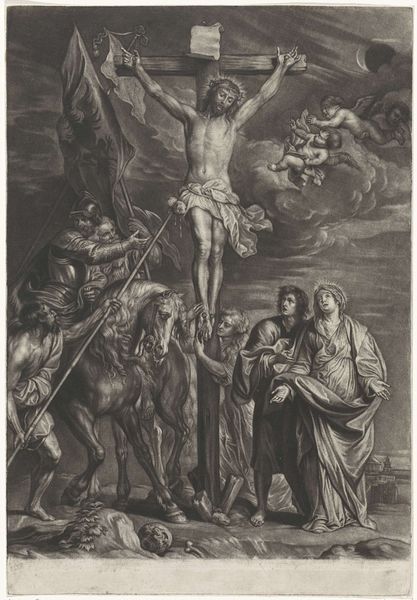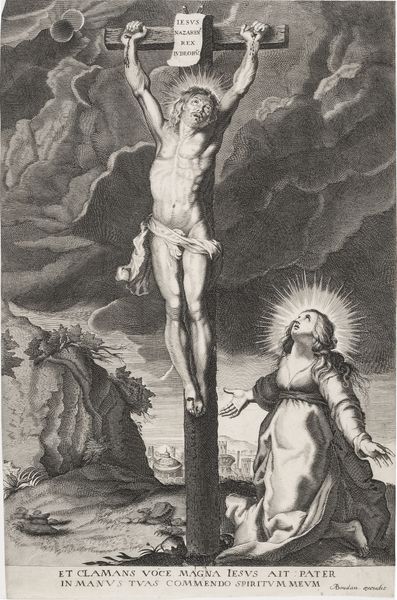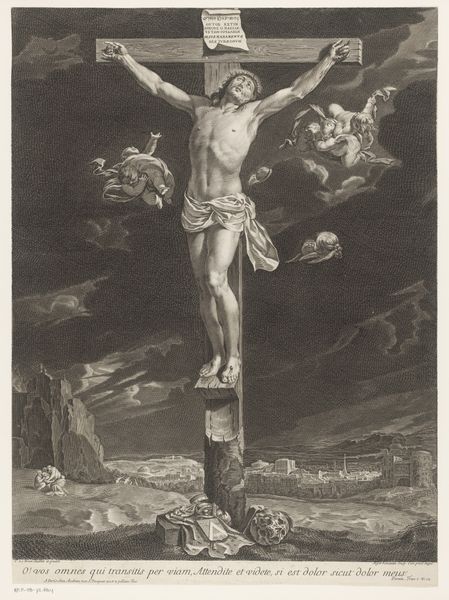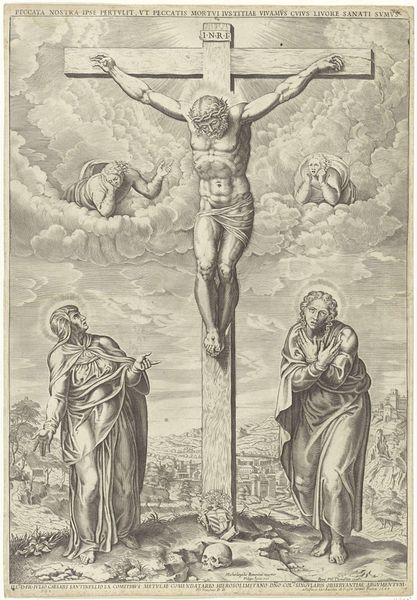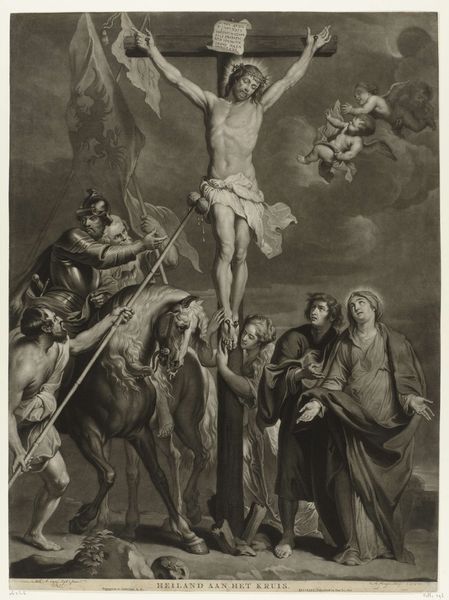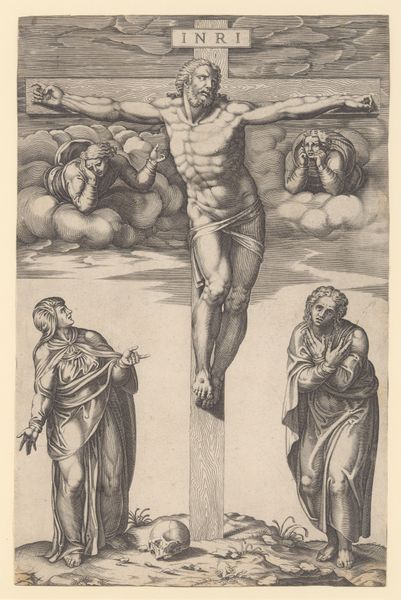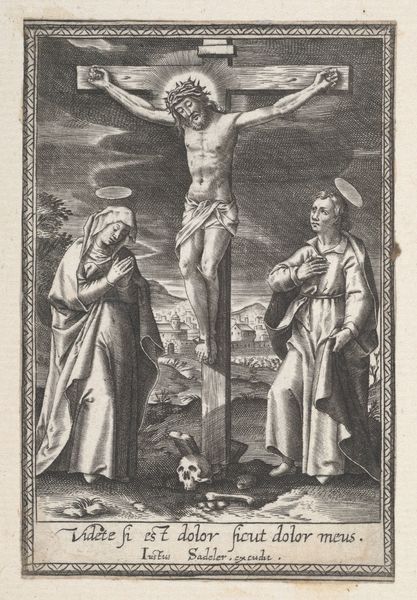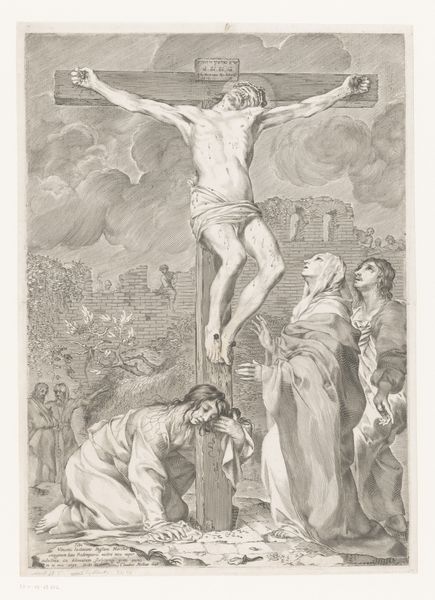
The Holy Trinity; Christ on the cross flanked by two angels, the Holy Spirit as a dove and God in heaven above the cross, a rectangular composition with half-circle at the top, after Reni 1702
0:00
0:00
drawing, print, engraving
#
portrait
#
drawing
#
baroque
# print
#
old engraving style
#
figuration
#
cross
#
christianity
#
crucifixion
#
history-painting
#
engraving
#
angel
#
christ
Dimensions: Sheet (Trimmed): 24 5/8 × 16 9/16 in. (62.6 × 42 cm)
Copyright: Public Domain
Curator: This print, created by Sir Nicolas Dorigny in 1702, is based on a work by Guido Reni. Entitled "The Holy Trinity," it depicts Christ on the cross, surrounded by angels and the divine presence. Editor: The scene is immediately striking—incredibly stark in its drama and emotional power. It draws the eye upward through layers of sorrow and culminates in this... judgmental figure at the top. It definitely feels characteristic of its era, full of the agony of the Baroque. Curator: Absolutely. Remember, Baroque art emerged during the Counter-Reformation. Its function was often to evoke deep religious fervor and reaffirm Catholic doctrine in response to Protestant challenges. We see that play out here with potent theological symbolism, intended to elicit feelings of both guilt and awe. Editor: Yes, there's that ever-present symbol of sacrifice and redemption—Christ on the cross. But look at the angels! Some weep, others pray... It's a chorus of human emotion, all responding to the central image of suffering. The cultural memory tied to such images is incredibly powerful. The engraving medium here is key as well. Engravings have been critical to disseminating knowledge and religious ideas since their origins. Curator: The choice to portray God the Father as an older, patriarchal figure isn't accidental. The social construction of power within religious institutions clearly reflects existing gender and generational hierarchies. Considering the political role of the church, that depiction enforces and reproduces a specific kind of authority. Editor: And yet, I see tenderness too, not just stark power. Note the Holy Spirit depicted as a dove—a very feminine symbol amidst the traditionally masculine portrayal of God. Curator: That creates an interesting tension, doesn't it? The interplay between suffering, redemption, and power dynamics opens many paths for contemporary interpretation, allowing us to confront how these historical depictions continue to shape current cultural and political landscapes. Editor: Indeed. Symbols always retain echoes of their past interpretations, and the crucifixion in particular has accrued layers of meaning over time. The engraving preserves a particular understanding for a specific cultural moment, for modern viewers. It makes us contemplate about how our symbolic systems endure and adapt. Curator: Examining pieces like "The Holy Trinity" through multiple lenses enriches our grasp of history. Editor: I find it an opportunity to really feel the weight of symbolism, a visual reminder of complex cultural inheritance.
Comments
No comments
Be the first to comment and join the conversation on the ultimate creative platform.
